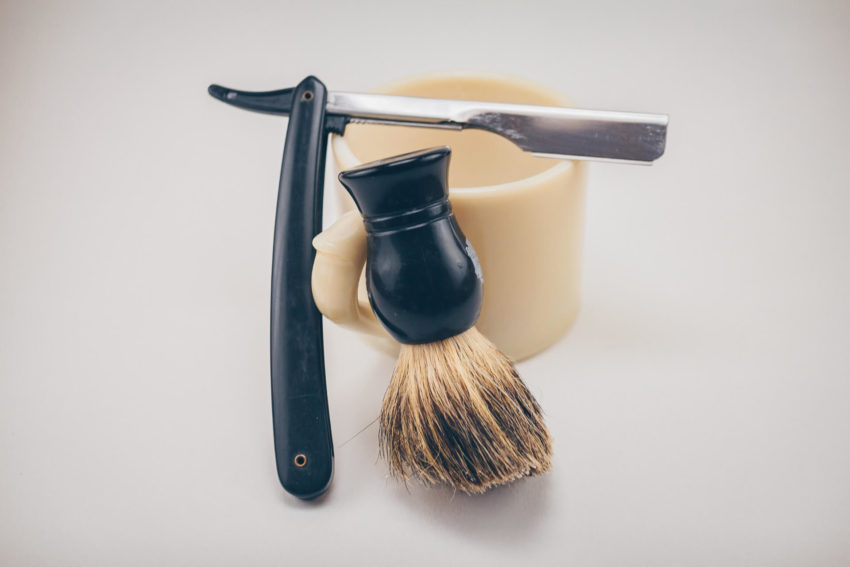Atlanta Profile: Alonzo Herndon

Early Life
Alonzo Herndon was born in 1858 into slavery. His mother was enslaved and his father was a white slave owner — he refused to acknowledge Alonzo as his son throughout his life. After the Civil War, Herndon’s family gained emancipation in accordance with the 13th Amendment. The family began working as sharecroppers in Social Circle, east of Atlanta, but life was tough and they struggled to scrape enough money together to get by. Alonzo Herndon received just one year of schooling, making his success even more of a feat. Aged 11, Herndon gathered together his savings (11 dollars) and left for Senoia, where he went to work as a farmhand. It was in this small city that Herndon first learned the skills of barbering.
Becoming a Barber
Despite escaping the shackles of slavery, freedom for Black people was still very much limited by the professions that were permitted to work in. After the Civil War, barbering was one of the few trades open to Black people. After learning the basic skills of the trade in Senoia, Herndon discovered that he had a talent and moved to Jonesboro, Georgia, where he opened his first shop. As his clientele grew, so did his ambition and he decided to make a go for it in the big city, Atlanta.
In 1883, Herndon started working for another African American barber and spent the time learning new skills and observing the experience of clients in the barbershop — an element that he addressed in his own shops and which made him a household name. By 1904, Herndon had three barbershops in Atlanta and was married to Adrienne Elizabeth McNeil who was intelligent, highly educated, ambitious, and head of the drama department at Atlanta University.
In 1910, when Adrienne died, Herndon remarried, and with his second wife, Jessie Gillespie, traveled to Europe on their honeymoon. Herndon was inspired by the architecture and luxury of European restaurants, shops, and buildings — something which he took back with him to Atlanta and wove into his own establishments.
Herndon’s barbershops were a totally new experience for the high-flying clients that frequented them, they were luxurious and strived to provide the lawyers, judges, presidents, and businessmen with much more than a haircut. The most famous shop was the one on Peachtree Street which was nicknamed the Crystal Palace due to the crystal chandeliers that hung from the ceilings which oozed images of wealth and eliteness.
Making Millions
Despite being the wealthiest Black man in Atlanta and wealthier than most white people, Herndon was restricted by the Jim Crow segregation that continued in the South. He could not mix in the same spaces as his patrons due to the limitations on his race. That meant not being able to go to the same parks, restaurants, swimming pools, or sit in the same section of streetcars.
Herndon began investing in real estate (buying 100 rental properties) and turned his business eye to insurance. After discussions with ministers who encouraged Herndon to buy a failing insurance company to provide services for the Black community, Herndon reorganized the business into the successful Atlanta Life Insurance Company, one of 5 African-American insurance companies to be legally recognized by the state. It was a time when a lot of insurance companies would not insure Black people and Herndon offered a service to provide security to the Black community. When Herndon first bought the Atlanta Life Insurance Company in 1905, its assets were valued at $5,000 and just 17 years later they were valued at $400,000.
Legacy in Atlanta
Alonzo Herndon died in 1927 aged 69 years old. His son from his first marriage, Norris B.Herndon, took on the company and continued to expand it into a multi-million dollar empire. As the first Black millionaire, Herndon defied the status quo and strived to provide better living standards for the Black community in the South.
He is a celebrated figure in Atlanta and today you can visit the Herndon Home Museum and take a guided tour through Alonzo Herndon’s home which was built in 1910. See how proud the millionaire was of his roots in the murals that depict his rise to wealth and success. The building was made a National Historic Landmark in 2000.
The Herndon Foundation, founded in 1952, aims to continue working on the philanthropic ideas that Alonzo and his son Norris lived by. It’s a foundation that aims to encourage entrepreneurial skills in young people and encourage them to stay in school in order to plan for successful futures.